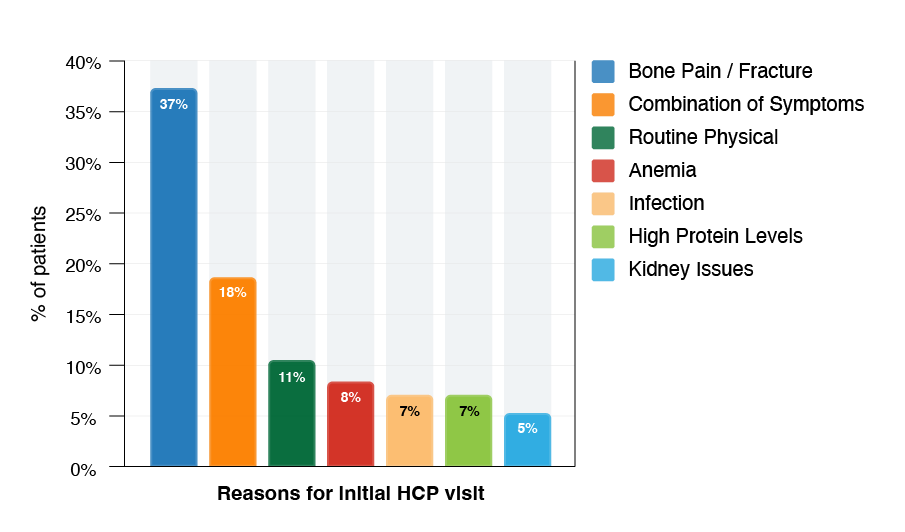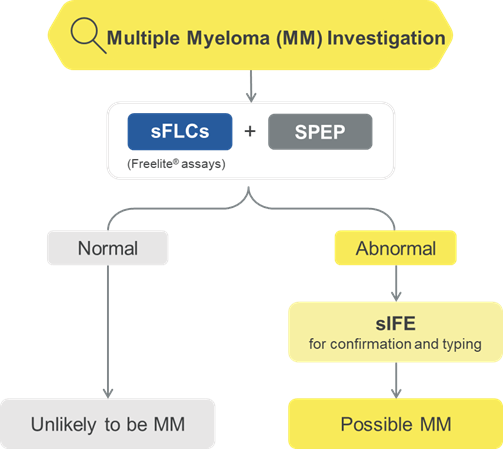“Most patients diagnosed with multiple myeloma see their primary care provider several times prior to Hematology referral”.
“When patient symptoms and basic laboratory findings are suggestive of multiple myeloma, the primary care provider should initiate extended laboratory work-up that includes serum protein electrophoresis (SPEP), serum immunoglobulin free light chain assay (sFLC), and serum immunofixation (sIFE)”.
Mikhael J et al., Multiple Myeloma for the Primary Care Provider: A Practical Review to Promote Earlier Diagnosis Among Diverse Populations, American Journal of Medicine 2022

Dr. Claudia Fogl explains
Monoclonal gammopathies are disorders associated with the production of monoclonal proteins.
AL Amyloidosis, Multiple Myeloma, and Waldenström’s macroglobulinemia are all examples of malignant monoclonal gammopathies.
Multiple Myeloma is a disease that requires urgent treatment. Diagnosis is often delayed, due to the symptoms being non-specific and easily confused as part of ageing.
1 in 5 multiple myeloma patients visit their healthcare provider (HCP) 5 or more times before being referred to a specialist.

IMF Patient & Family Seminar; Patient Survey August 24 2019.
Dr. Cornelius Willacey explains
The guidelines from the International Myeloma Working Group recommend serum protein electrophoresis (SPEP) and serum free light chain (sFLC) testing for initial investigations, but only 20% of blood test orders include sFLC requests according to a recent study.
Genzen JR et al., Screening and Diagnosis of Monoclonal Gammopathies: An International Survey of Laboratory Practice, Arch Pathol Lab Med 2018

Rajkumar SV, et al. International Myeloma Working Group updated criteria for the diagnosis of multiple myeloma. Lancet Oncol 2014
Dr. Stuart Morgan explains in this on demand webinar:
The longer patients go without the correct diagnosis and therefore without the correct treatment, the greater the risk of health complications impacting their quality of life. This can be avoided by ordering the best test combination to identify monoclonal gammopathies as recommended in the latest guidelines.
The products referred to on this page may differ from what is commercially available in your country. To find out what is available in your country, please contact your local Binding Site representative.
Not for use in China.
